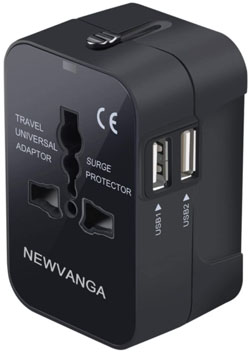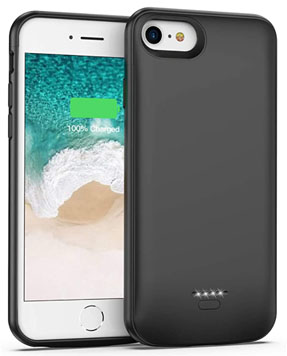Each time we travel we always try to improve on previous trips for items like saving money, preparedness, making better use of our time, etc. We thought we’d share some of the lessons we’ve learned through the years with you. In addition to the detailed list below, we’ve also included a printable checklist you can use each time you travel. There is also a Home Checklist and a Travel Budget Worksheet which contains even more helpful information.
Whether you’re getting ready for your first international adventure or just need a refresher, below are some things that are necessary along with some useful suggestions that will help save you money and make your vacation a far more pleasant experience for the entire family.
Jump to a specific section.
Six Months before Leaving
So you’ve decided to go overseas for your next vacation. We’ve found it best to begin some of the process early. No time like the present so you have less to deal with later.
1. Travel Budget
Create a travel budget with the printable worksheet offered below. This is where all our journeys begin, with a plan. After mutually agreeing on a few potential destinations, we create a travel budget for each and weigh the positives and the negatives.
This was how our visit to Germany & Holland with Untours came about and it ended up being one of our most memorable vacations.
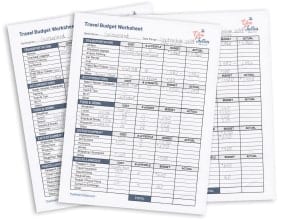
2. Travel Guide
As soon as you know where you’re headed, purchase a travel guide (AAA is always a great resource), read it and start creating a rough day-to day itinerary. Coming up with a tentative plan will help you decide if you need to purchase attraction tickets or make reservations ahead of time.
Your travel guide will provide great information on the city or country you are visiting and you may find interesting places to visit that you never knew existed.
It’s best to remain flexible. Your plans can always be altered if you find something unexpected along the way to explore or if you find yourself needing a day of rest. Always keep an open mind especially when traveling with kids who need free time to play and run around.
3. Purchase Travel Insurance
Hope for the best, but prepare for the worst! It’s always a good idea to purchase travel insurance to cover medical emergencies, trip cancellations, lost or damaged baggage, emergency evacuations, and much more. This will give you peace of mind and is well worth the cost if unexpected events occur. Carefully read your policy so you fully understand what is covered.
4. Start Learning Local Phrases
Start learning simple phrases that are likely to be used on your trip. “Hello”, “Thank You”, “Where are the bathrooms?”, “May I have the bill?” and “How much?”. You could also purchase a phrasebook or download Duolingo for free.
Load the Google Translate app on your mobile device then download your destination language locally. This will allow you access to the translator (including proper pronunciations) even if don’t have an internet connection. You can be confident in your ability to engage in some basic verbal communication, translate menus and interpret written signs. Again, do this before you leave so you don’t have to use your overseas data.

5. Immunizations
Check with the CDC (Centers for Disease Control and Prevention), or your countries equivalent, about immunizations and where you can get them. If you’re unsure check out your government’s website and search for “travel immunizations”.
6. Visas
Check your home country’s government website to confirm visa requirements. Sometimes getting an entry visa is quite simple but occasionally not. It can take several weeks to collect all the required paperwork so give yourself a good 6 months head start to cover any potential issues.
Make 2 copies of your visa to take with you and keep them in your personal bag, not your checked luggage.
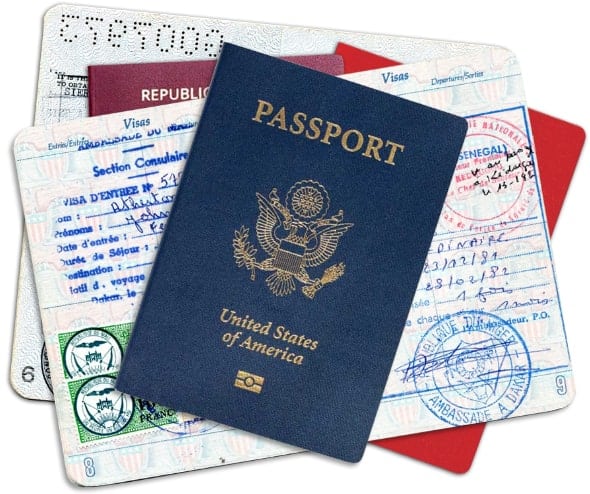
7. Passports
Check your passport expiration dates. Many countries require the expiration date to be valid 6 months from the date of entry so be sure to look at your return date as well.
If you are applying for a new passport, remember that the spring season is a very busy time for passport applications and may take some time, so plan accordingly and avoid unnecessary fees to expedite your passport.
As with your visa make 2 copies of your passport to take with you and keep them in your personal bag, not your checked luggage. If your documents get lost or stolen, contact your country’s embassy in the area. The process will go much faster if you can provide a copy of the lost passport in person.
It’s also a good idea to upload a digital copy of your passport into a secure cloud storage like iCloud, Dropbox or Amazon Drive. Another option is to upload a photo of your passport on your smartphone in case you need to access it offline. Just be sure to lock your phone.
We can never be too careful when it comes to our passports. Travel time is precious and you don’t want to waste one minute of it!
Three Months before Leaving
Time to start committing to a few popular spots that could fill up quickly. Often this is dependent on the time of year you’re traveling but always best to book early if possible.
8. Pre-Book Major Attractions
If you are traveling during the busy season, book your popular European attractions online in advance. You’d be surprised how quickly tickets, seats, reservations, etc. fill up.
9. International Driving Permit
If you plan to drive you’ll need to get your International Driving Permit. Head to your local AAA to get your International Driving Permit (IDP). Each country has its own requirements, so do your research.
AAA is able to postdate your permit for up to six months, so make sure to mark your application with the date you want the permit to become effective.
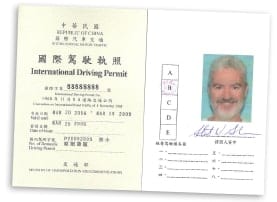
One Month before Leaving
This is a good time to start doing some local research. Be aware of some of the nuances of your vacation destinations.
10. Be Aware of Local Scams
Research common tourist scams in the country. Most scams target tourists, especially in crowded attractions (think pickpockets) so be proactive and travel smart.
Crossbody, messenger-style bags are comfortable to carry and easy to keep close to you. Many of these bags offer RFID-blocking pockets to protect your credit cards, cut-resistant straps and rip-resistant fabric.
11. Avoid culture shock
Learn a little about the culture and dining and tipping practices. Tipping may be expected in the US but it may not be the norm elsewhere.
While planning what to pack, research cultural clothing in certain countries so you can dress appropriately. When in Rome . . .

12. Tell a Friend
Notify a trusted friend or family member of your plans. Leave them your itinerary and talk about how you will communicate; via email, Facebook DM, Skype, Whats App, Viber, etc., and how often they can expect to hear from you.
13. Medications
Check your prescriptions and get enough refills to last your entire trip. It’s also a good idea to carry your script with you.
Check with airport security (tsa.gov in the US) for rules about taking your medications through security. Be sure to notify the officer at the start of the screening checkpoint that you have medically necessary liquids and/or medications.
A small first aid kit is very handy to carry as well. At minimum, we always bring bandages, ibuprofen, antibiotic ointment, tweezers and moleskin for blisters.
3 Weeks before Leaving
It’s time to check up on your electronics. Do your research for what may be unique to your destination as well as your own personal habits. For instance, is wi-fi standard and free where you’re traveling or how long does your phone’s battery typically last?
14. Universal Travel Adapter
Check out the power supply standards for your destination. If necessary, purchase a Universal travel adapter to be able to charge your phone, tablet or laptop wherever your destination.
Our favorite is the NEWVANGA All in One Worldwide Travel Adapter Wall Charger. It is rated in over 150 countries, has (2) USB ports and fits in the palm of your hand for easy storage.
Click on the image to the right to connect to Amazon and learn more.
15. Organize Your Electronics
Use a travel organizer for chargers, headsets, portable chargers, and other accessories.
16. Phone Batteries
A cell phone battery case, for extending your phone’s battery is a good option to have on the go especially if you like to take lots of pictures and video during the day.
We’ve had great success with this Smiphee rechargeable battery case. It more than doubles your battery and is easily rechargeable every night.
Click on the image to the right to connect to Amazon and learn more.
17. Mobile Phone Protocol
Turn off your cellular function and use free Wi-Fi, or purchase an international SIM card, to cut down on charges and maintain access to data while traveling. This will all depend on what type of traveling you are doing. And don’t forget your power cords!
2 Weeks before Leaving
Everyone is getting excited now with only a few weeks to go. Time to check off a few more personal things as well as money-related items.
18. Emergency Phone Numbers
Create a list of all your emergency phone numbers and store them on the cloud.
19. TSA
If you are travelling from the US, make sure you are TSA compliant. Do your research or you may have to give up items while going through security. If you plan to lock your luggage, purchase a TSA-Approved Lock. It allows TSA Security to unlock and check your luggage if necessary.

20. Local Travel Warnings and Advisories
Be sure to check for travel warnings and advisories in your vacation destination. There may be safety concerns, weather issues, etc. for the country you are visiting.
21. Bring Cash in Local Currency
Bring enough cash to cover transportation costs from the airport and for smaller purchases. Airport exchange rates are the worst and you don’t want to start off your vacation unnecessarily spending money before it even begins!
You can purchase local currency prior to your departure from AAA. I find AAA to be a great resource for free travel brochures, maps, tour books as well as travel items with a 10% discount. I originally purchased this membership for their automotive tow service.
Also check the conversion rate before you leave to get a sense of how much your country’s currency is compared to your destination country.
Wait until you find an ATM at your destination to withdraw local currency. Using an ATM will provide you with the best exchange rates and fees. Your bank gets currency wholesale and their rates will always be the best.

22. Banks and Credit Cards
Contact your bank and credit card company and let them know when and where you will be traveling. Ask about international transaction fees each time you use your credit card. There are many credit cards that do not have these fees so do a little research prior to your departure.
When using your credit card at your destination, be sure your card is charged in local currency. You don’t want the retailer using their own exchange rate, which will be less favorable to the one your credit card is giving you.
1 Week before Leaving
Almost there . . . just a few more items to check off to ensure you have no worries once you hit the road. Always best to confirm reservations and transportation to your hotel before departing.
23. Hotel Reservation
Confirm your hotel reservation before you depart, especially when making a reservation through a booking platform.
24. Print Your Important Documents
Print your plane tickets, hotel reservations, itinerary and make copies of your photo ID, health insurance card, credit/debit cards and anything else of value. Put all in a secure place away from your wallet such as your personal bag, but not your checked luggage.
Lock all important documents in a room safe when you reach your destination. If your credit/debit cards get lost or stolen, by making copies, you will have access to the phone numbers to your credit card company or local bank.
Scan these items to a secure cloud storage or email them to yourself. Once you’re done you’ll only have to update your changes for future trips.
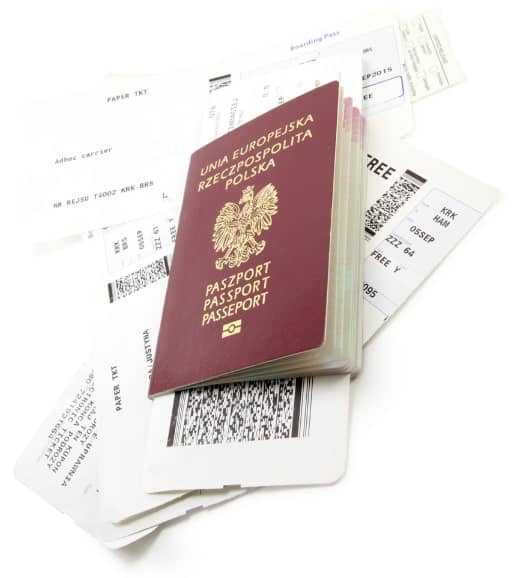
25. Check the Weather Forecast
With today’s weather apps it’s easy to check up on the 10-day weather forecast for your destination in advance and it may help you decide whether to bring extra layers, rain boots, a rain coat, umbrella, etc. for your trip.
26. Maps & Guidebooks
Download maps and guidebooks locally to your phone or tablet before you leave so you have everything handy once you land without needing wi-fi. You will avoid downloading charges from your wireless carrier or using up precious data plus you’ll have quicker access.
If you are visiting Rome, download our map and walking guide to the legendary Campo Marzio district of the Eternal City.
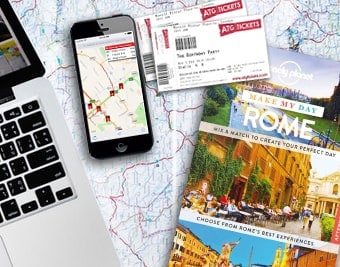
27. Route to Hotel
Confirm your transportation from the airport to your hotel beforehand. Will you use public transit, Uber, Lyft, taxi, or an airport transfer? If you arrive late or your flight gets delayed, it helps to have a plan when you land, especially when you’re exhausted from traveling all day.
Conclusion
We’ve always found that putting the work in before we leave on a trip really frees us up to relax and enjoy ourselves when traveling. Things can always go wrong on the road but the better you prepare the easier it is to deal with those things when they happen.
Did we miss anything? We’d love to hear from you and hear your best practices for making your travels special for the entire family.
Need to get organized for your next trip?
Sign up for our Email Newsletter
and get your FREE Checklist for Overseas Trip + Bonus!
We don’t like SPAM and promise to keep your email safe. Here’s our privacy policy.


